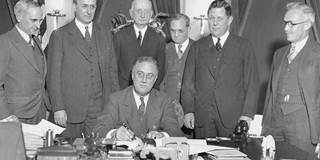
Learning from America’s Forgotten Default
One of the most pervasive myths about the United States is that the federal government has never defaulted on its debts. There’s just one problem: it’s not true, and while few people remember the "gold clause cases" of the 1930s, that episode holds valuable lessons for leaders today.
LOS ANGELES – One of the most pervasive myths about the United States is that the federal government has never defaulted on its debts. Every time the debt ceiling is debated in Congress, politicians and journalists dust off a common trope: the US doesn’t stiff its creditors.